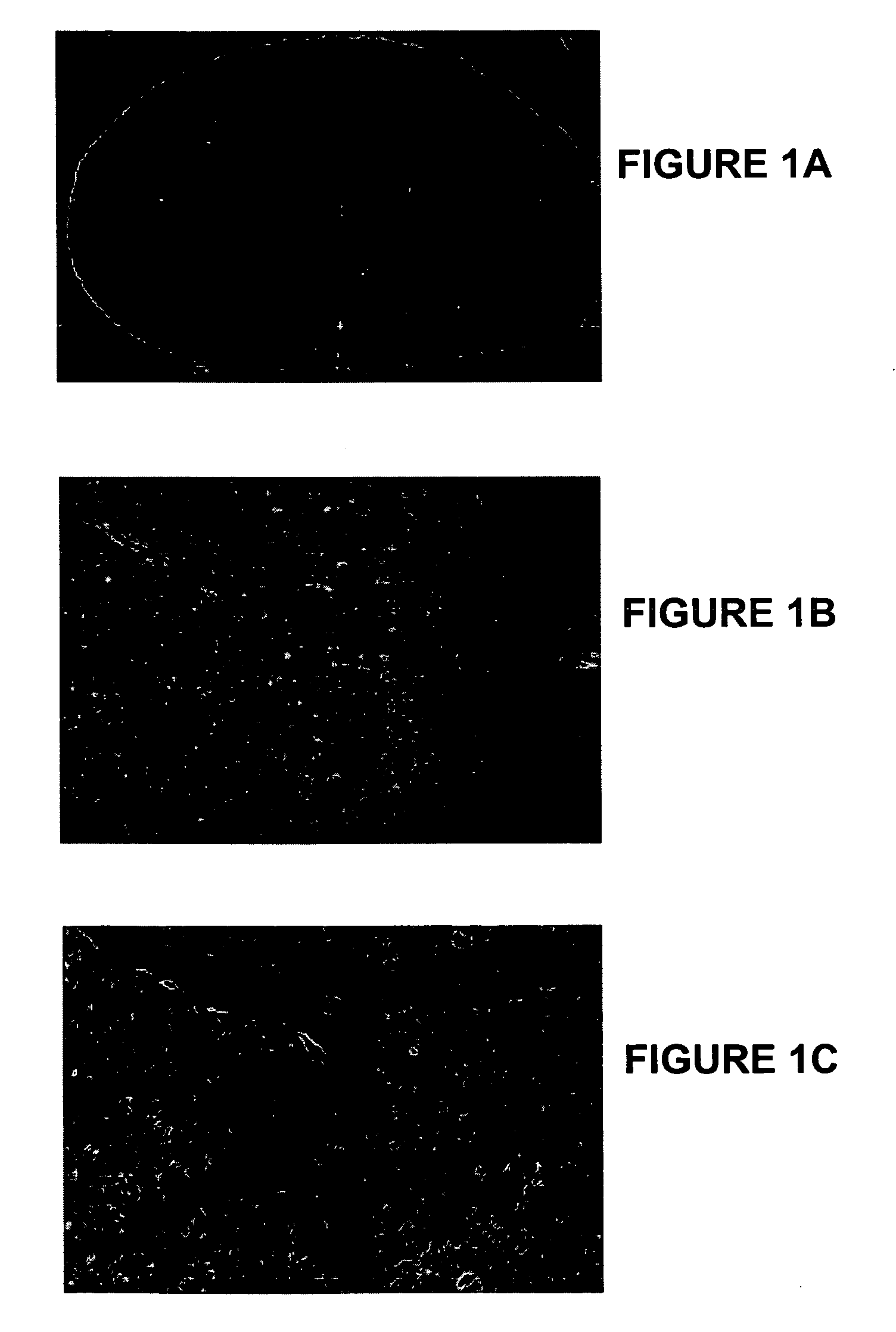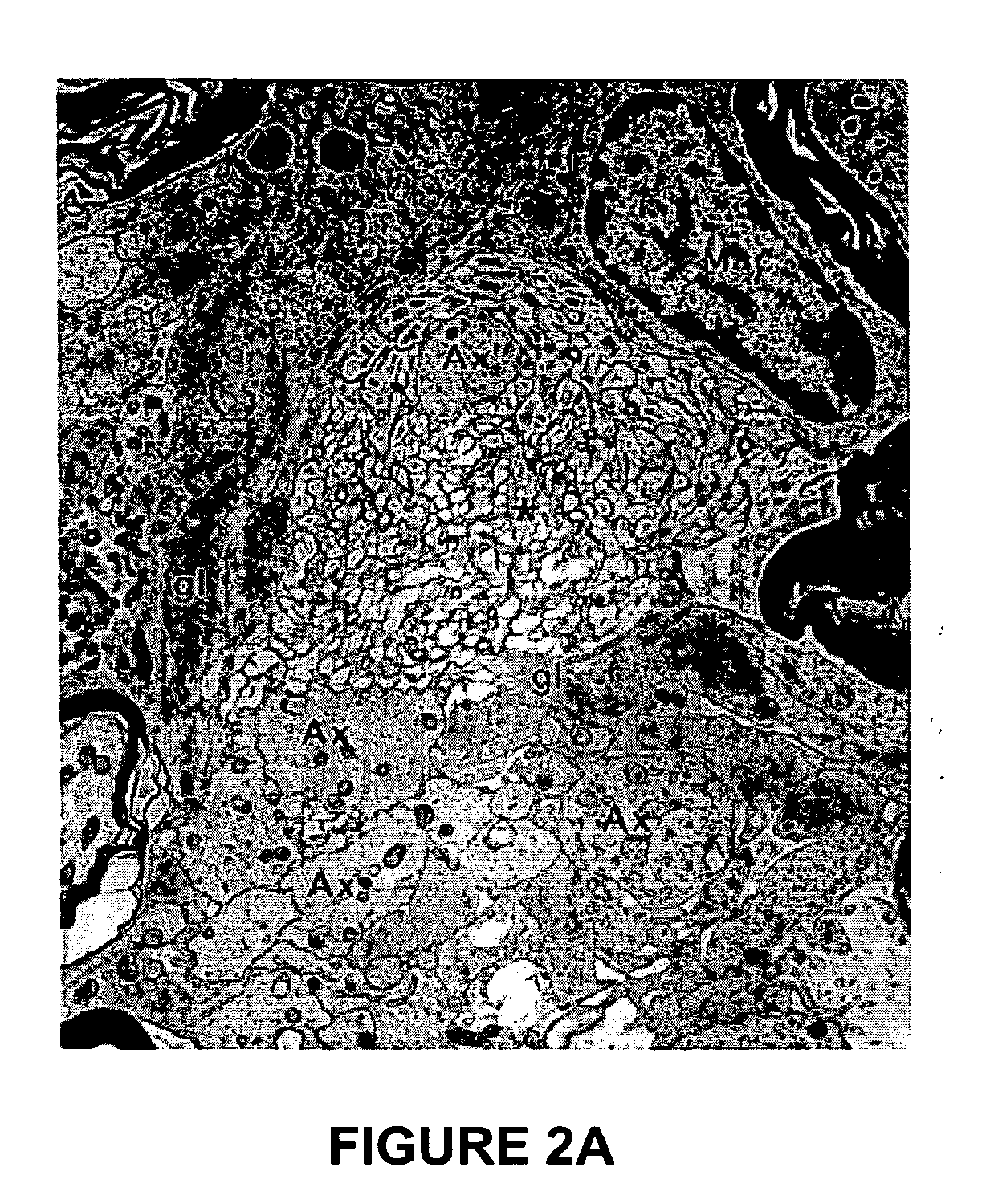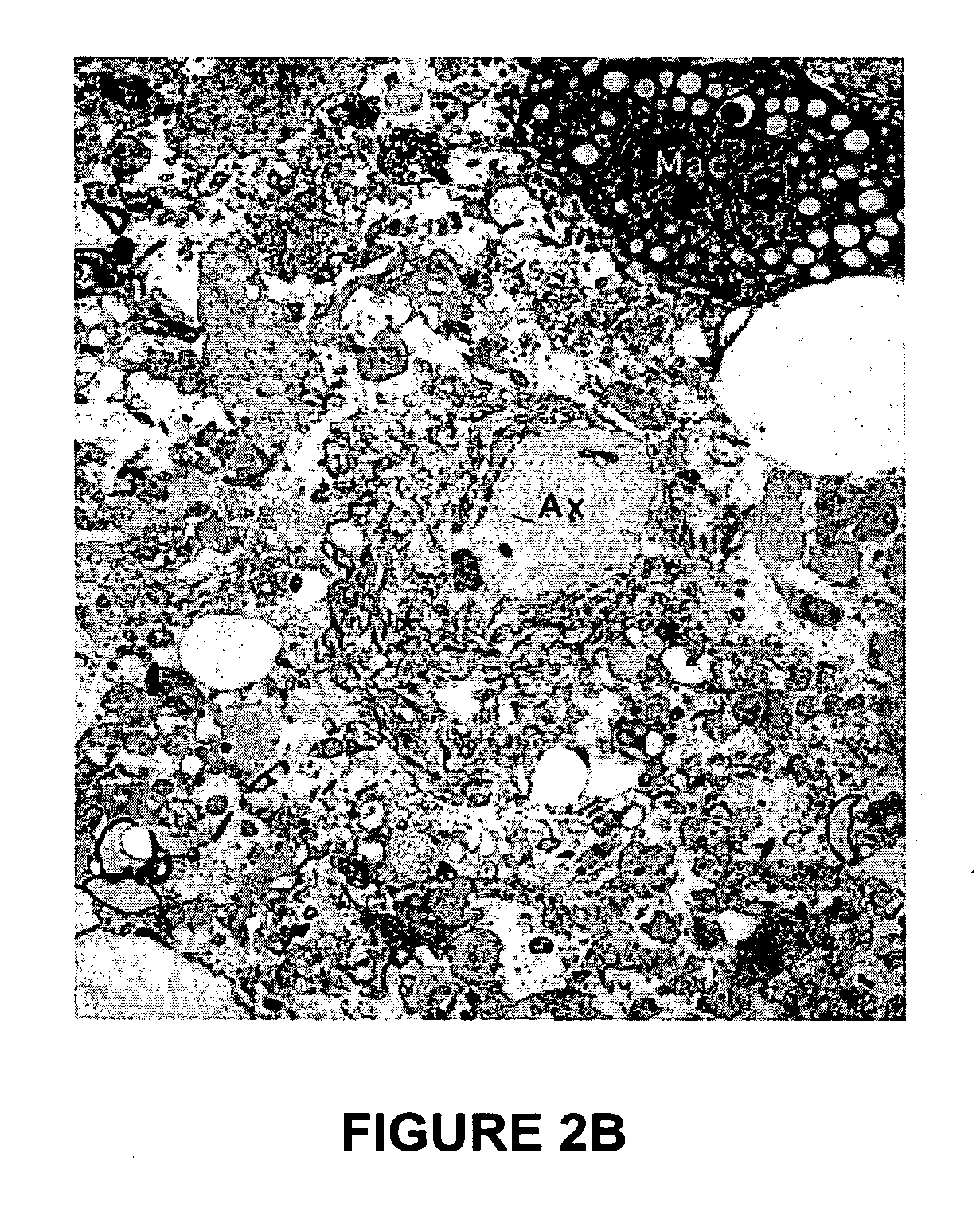Animal model systems for viral pathogenesis of neurodegeneration, autoimmune demyelination, and diabetes
a model system and neurodegeneration technology, applied in the field of animal model systems for the pathogenesis of neurodegeneration, autoimmune demyelination, diabetes, can solve the problems of cns invasion, significant women's health issue, and damage to myelin and/or neurons, and achieve the effect of reducing the severity of a diseas
- Summary
- Abstract
- Description
- Claims
- Application Information
AI Technical Summary
Benefits of technology
Problems solved by technology
Method used
Image
Examples
example 1
Infection of Marmoset Cells In Vitro
[0146] This Example demonstrates the susceptibility of marmoset lymphocytes (PBMC) to infection in vitro with HHV6 variants A and B.
[0147] Common marmosets are susceptible to infection by herpesviruses (Provost et al., J Virol 61:2951-2955 (1987); Jenson et al., J Gen Virol 83:1621-1633 (2002); Ramer et al., Comp Med 50:59-68 (2000); Farrell et al., J Gen Virol 78(6):1417-1424 (1997); Cox et al., J Gen Virol 77(6):1173-1180 (1996); Wedderburn et al., J Infect Dis 150:878-882 (1984); Johnson et al., Proc Natl Acad Sci USA 78:6391-6395 (1981); de-The et al., Intervirology 14:284-291 (1980); Ablashi et al., Biomedicine 29:7-10 (1978); Falk et al., Int J Cancer 17:785-788 (1976)), and express a CD46 molecule that is highly homologous to the human HHV6 receptor. Murakami et al., Biochem J 330:1351-1359 (1998). Using trans-well co-cultures with HHV6-infected human T cell lines, it was demonstrated that marmoset lymphocytes (PBMC) can be infected in vi...
example 2
Infection of Marmosets In Vivo
[0148] This Example demonstrates the susceptibility of C. jacchus marmosets to in vivo infection with HHV6 variants A and B.
[0149] Seven adult marmosets were infected with HHV6 in vivo using various protocols (summarized in Table 3 below): (1) intravenous inoculation of the animal's own PBMC infected ex vivo with HHV6-A or HHV6-B (as verified by IFA and PCR), followed by intravenous injection of a cell lysate containing identical live virus variant 6-8 weeks later; (2) two intravenous injections of viral lysates from MOLT3 HHV6-B-infected cultures at 5 weeks interval; and (3) one inoculation of HSB2 cells infected with HHV6-A (HHV6-A+ HSB2), followed by injection of either infected or uninfected cells 3 months later.
TABLE 3Infection of Common Marmosets with HHV6 VariantsAgeClinicalEuthanasiaInflam-Animal ID(yrs)SexInfusion 1 (day 0)Infusion 2 (day)signs(day)mationDemyelination190-947F8 × 106 HHV6-A+· PBMCHHV6-A+ HSB2 Lysate (42)Yes68++125-9FHHV6-B+·...
example 3
Immuno-Reactivity to Viral Antigens
[0154] This Example discloses methodology for monitoring T cell and antibody responses to HHV6-Antigens.
[0155] Methods were developed to serially monitor T cell and antibody responses to viral antigens. Preliminary evidence indicated that marmosets in the colony were naïve to HHV6, and that antibody reactivity appeared after inoculation. (See, FIG. 8.) No significant T cell reactivity was detected in PBMC or lymphoid organs. The presence of HHV6 DNA was monitored serially by nested PCR methodology. Consistent with the known tropism of HHV6 variants, HHV6-B, but not HHV6-A, was detected in the blood of infected animals. (See, FIG. 9.)
[0156] Importantly, while clear serum (IgG antibody) reactivity to HHV6-infected cells was observed to appear during the weeks following inoculation and was readily detected using FACS analysis, no IgG reactivity at all was detected in any of these sera by standard ELISA methods utilizing purified viral lysates coate...
PUM
| Property | Measurement | Unit |
|---|---|---|
| soluble | aaaaa | aaaaa |
| full-length | aaaaa | aaaaa |
| fluorescence activated cell sorting analysis | aaaaa | aaaaa |
Abstract
Description
Claims
Application Information
 Login to View More
Login to View More - R&D
- Intellectual Property
- Life Sciences
- Materials
- Tech Scout
- Unparalleled Data Quality
- Higher Quality Content
- 60% Fewer Hallucinations
Browse by: Latest US Patents, China's latest patents, Technical Efficacy Thesaurus, Application Domain, Technology Topic, Popular Technical Reports.
© 2025 PatSnap. All rights reserved.Legal|Privacy policy|Modern Slavery Act Transparency Statement|Sitemap|About US| Contact US: help@patsnap.com



